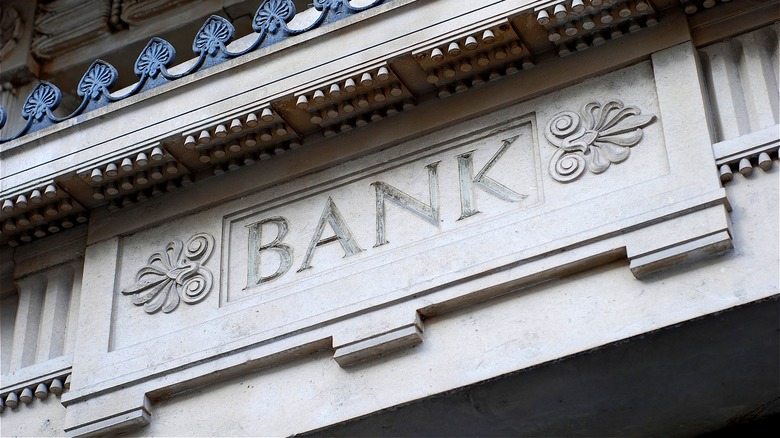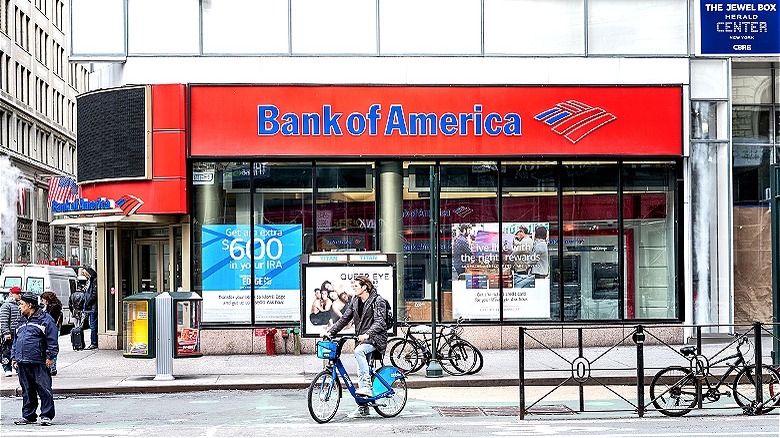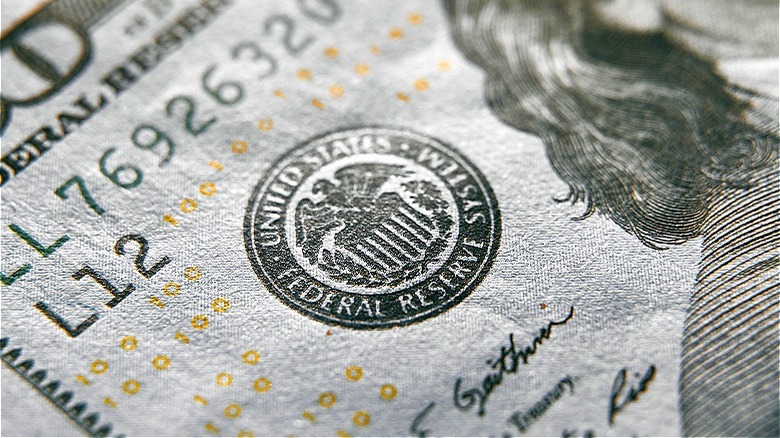The Real Difference Between Regional And National Banks
When you know the difference between national and regional financial institutions, you'll better understand the importance of shopping around before choosing a bank. According to the Statista Research Department, there are over 4,470 banks in the United States insured by the Federal Deposit Insurance Corporation, giving the U.S. the distinction of having the most banks of any nation.
The first national bank in the United States was built in Pittsburgh, Pennsylvania, in 1797 and still stands as a historic landmark in Independence National Historical Park. A national banking system followed in 1863 with plans for the creation of a national currency regulated by the Comptroller of the Currency. At one point in the 1920s, there were almost 30,000 banks in the U.S.
It seems, though, people weren't so jazzed at the prospect of being under the influence of banking behemoths, believing this would work against the little guys, such as farmers and small businesses. However, before the implementation of the federal deposit insurance system, a local or regional bank could go out of business and that would be the end of their regional clients' accounts and whatever money they held in them. So the FDIC provided the equivalent of a $250,000 deposit cushion for their clients, making them safer for the U.S. economy and more competitive with bigger banks.
Size of assets and clients
Regardless of how much money exists in the world, the size of a bank dictates what share of that money it manages. Regional banks are financial institutions with assets between $10 billion and $100 billion, and while bigger than community banks, they're still dwarfed by national bank holdings.
Regional banks operate within specific states or several states within a region, and together hold about $3.1 trillion in assets or the equivalent of around $29.7 billion for every bank. In comparison, national banks control assets of $100 billion or more, and control more than $16 trillion in combined assets, or the equivalent of $500 billion for every bank. Their numbers have tripled over the last 20 years as Americans who lived through a financial crisis, COVID, and the recent collapse of smaller banks tied to the collapse of FTX — Silicon Valley Bank, Silvergate Bank, and Signature Bank — have sought the perceived stability of larger banks with higher assets over smaller institutions.
A DepositAccounts survey found that 31% of Americans bank at national banks compared to 26% who prefer regional banks. It turns out the preference is also related to earning power. While 47% of national bank clients earn over $100,000 a year, only 21% make $35,000 or less.
Geographic reach
National banks came into existence in 1791 to pay the debts incurred by the American Revolution, explains the Federal Reserve Bank of Minneapolis. The Bank of the United States was effectively the nation's first central bank, with a startup capital of $10 million and a branch in each of the republic's eight main cities. Once the war debts were paid off, however, many Americans were against having a national bank with the power to print and tax money rather than Congress, so Congress voted against renewing the Bank's charter in 1811.
After the War of 1812, a second Bank of the United States came into the picture in 1816 with over three times more capital and national presence — $35 million and 29 major cities — than the first. In a case of déjà vu, Americans grew wary of a national bank with so much power, and Congress under President Andrew Jackson didn't renew the Bank's charter. This, in turn, opened the door for more state-chartered banks, resulting in hundreds of new banks under "free banking laws." It was the onset of the Civil War that again resulted in a need for a larger banking system, resulting in the return of national banks.
Geographically speaking, regional banks operate in more than one state within the U.S. but in specific regions — the Northwest or Southeast, for instance — while national banks operate across the nation, typically managing a much larger share of assets than regional banks.
Rates and bank fees
When it comes to rates and fees, you'll find differences between regional and national banks. The geographic reach of national banks means a wider distribution of everyday financial necessities, like ATMs, which often come with higher fees if you use an outside bank. While national and regional banks both offer customers banking basics, like checking and savings accounts, the commercial nature of national banks also lends itself to corporate and investment banking.
Overall, regional banks tend to offer lower fees. While standard deposit account fees tend to float between $1 to $15 monthly, an AP Buyline comparison of U.S. Bank, a regional bank, and Bank of America, a national bank, found U.S. Bank charges a $4 fee for savings accounts maintenance versus BoA's $8. While both banks also offer a waiver fee to remove the monthly charge, Bank of America requires a minimum $100 initial deposit, while U.S. Bank is just $25.
Where transferring money is concerned, BofA's four options — incoming domestic, outgoing domestic, incoming international, and outgoing international — cost between zero dollars and $45. On the other hand, U.S. Bank offers the same services with fees ranging from $20 to $50. So if you're trying to figure out how to avoid paying fees when transferring money, national wins.
Product offerings
Often, we don't consider the products being offered by the bank as worthy of inspection, perhaps believing that all banks offer the same experience. In the case of regional and national banks, both offer deposit accounts, plus loans, credit cards, investments, business banking, and online services. While fees may be higher or lower depending on the bank, the products aren't too dissimilar in purpose.
However, national bank products offer more international banking services, with a more digitally savvy online banking technology. While regional banks tend to offer products more closely tailored to clients' regional needs, the size of national banks is suited for personal, business, and corporate-sized clients with more sophisticated investment offerings. For instance, while regional bank U.S. Bank offers clients money market accounts — a deposit account with higher interest than your run-of-the-mill savings account — national bank Bank of America offers more services for the small business owner.
Regulatory oversight
The Board of Governors of The Federal Reserve System includes ensuring a stable financial system as one of the responsibilities of the Federal Reserve. One way it does so is by providing oversight for U.S. banking institutions that help contain or mitigate risk to the nation's financial system.
According to the Congressional Research Service, the Fed holds sway over both national and state (regional) banks within the purview of the Federal Reserve System. Under the umbrella of the Fed is the Office of the Comptroller of the Currency, which specifically regulates national banks, federal branches of foreign banks, federally chartered cooperative savings and loan associations (or thrifts). The Federal Deposit Insurance Corporation provides deposit insurance for clients of state or regional banks and savings and loan associations operating outside the scope of the Federal Reserve System.
Basically, any national bank or regional bank under a federal charter is under the direction of the Federal Reserve. The FDIC regulates state or regional banks outside of that jurisdiction. That said, national banks are also beholden to the FDIC since that regulator also insures their deposits. Whether a national bank or regional bank, there are limits on how much of your money is insurable in each account. Here's how much money you should keep in your savings account to protect deposits.





